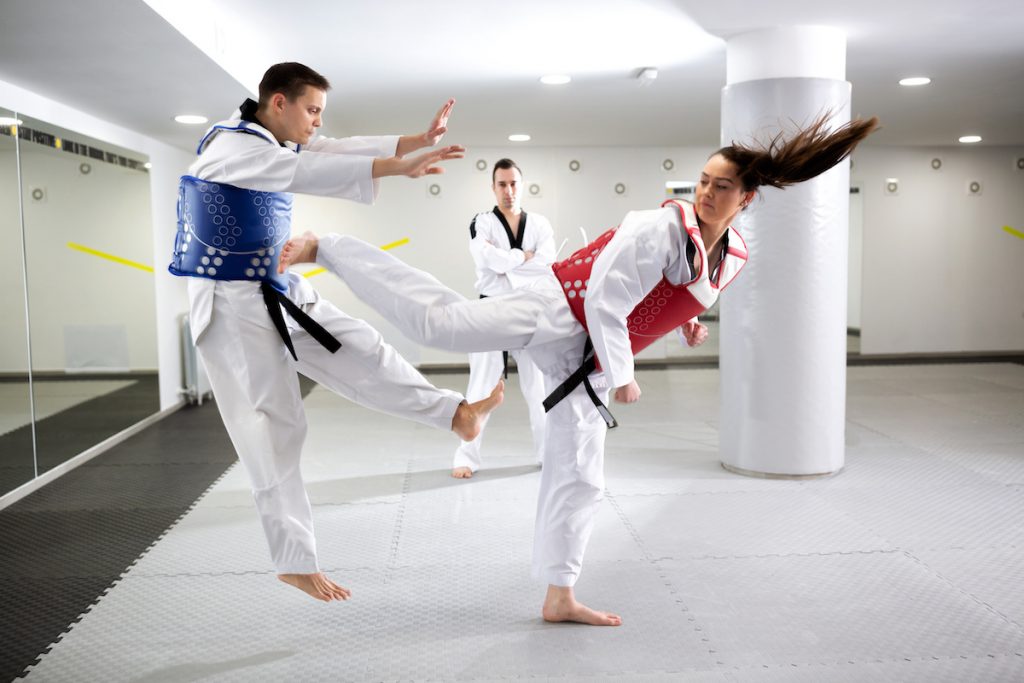The art of sparring, a critical part of martial arts training, allows students of all ages to engage in competitive play. Healthy, competitive play allows those in martial arts training to practice what they learn week to week. Sparring is when students, at a certain level of achievement, practice techniques and skills on the mat with established parameters and supervision. Sparring is what you see in competitions. Although those can be pretty serious, supervised sparring at studios like SwiftKick Martial Arts, San Diego, allows students to experience the unity of mind and body when putting all they have learned into play. It is the culmination of their hard work, focus, and effort. There are three significant reasons studios should incorporate sparring in their programs:
1. Aides in Healthy Conflict Resolution
The act of practicing skills and techniques to be used if conflict can\’t otherwise be avoided is immeasurably valuable. When the body is physically present in a confrontational situation with parameters, it allows your mind and body to work synonymously together and create an immersive experience. Everything else is blocked out, and it requires a mental focus that can’t be simulated. Even with incredible instruction and repeated technique practice, the best format is sparring against an opponent. Martial arts have been shown to help with conflict resolution.
2. Emotional Benefits for Children, Teens, and Adults
Children are emotional balls of energy. It can take a session or two for some high-energy students to recognize the expected pace and behavior in the studio. Fortunately, the cohesive teaching style of Brian and his team of instructors help in achieving this much sooner. Respect, focus, honorable behavior, and self-control are required to progress through belt rank at SwiftKick.
Sparring is an activity reserved for students displaying these traits. They are asked to participate in this important milestone in martial arts training as they are ready.
As children become teens, social pressure and bullying may increase. Let\’s face it, being a teenager is hard, and martial arts is an excellent way for students to build confidence and defend themselves. Teens learn how to avoid and manage conflict. The mind and body balance taught using various martial art techniques builds teens up and prepares them for real-life situations.
Sparring is a way to prepare teens for inevitable conflicts in life. Learning at a young age to check emotions, work to avoid conflicts, and defend oneself are priceless tools as they navigate high school.
Sparring as an adult is grossly underrated in its value. It is often assumed adults know how to manage conflict healthily, deal with their emotions, and resolve things in the right way every time. Even if that is what we have been telling our kids, we know that is not true. Martial arts training has repeatedly benefited adults in their work-life and at home. The focus and mental conditioning required to succeed in martial arts spill over to all areas of adult life. The ability to process obstacles and life’s inevitable stressors healthily and calmly allows many adults to address anger issues.
3. Real-Life Application
Sparring is a necessary component of martial arts training. Physical contact and engagement offer a unique fight situation. The adrenaline and emotions during a sparring match will not naturally occur unless in an actual conflict. This is one of the main reasons sparring is absolutely essential to martial arts training. Think of it another way. If a doctor has only ever had training in the classroom and reading books, they are not prepared to implement their learning. Even working on dummies (which SwiftKick also uses throughout training as a bridge to spar) is not the real thing. In a real-life situation, the circumstances are entirely different, regardless of the depth of training. It is for this reason doctors’ internships are so extensive. It ensures they have \”real-life\” opportunities to practice their training with supervision and parameters.
If martial arts students are trained but never have an opportunity to practice their loudest \”NO!\” while breaking away from a hold, they are not fully prepared. Sparring allows students to know the rush in these situations and better prepares them for any dangerous or harmful scenarios.
Traditional sparring will follow the traditions of martial arts. It is not a free-for-all fight on the mat. It is a coordinated, flowing display and implementation of skill. Respect and honor should be evident in all sparring activities. For example, participants will touch gloves before and after a sparring match, competitive or not.
I would argue that all humans can benefit from martial arts training, especially as they participate in the sparring element. Developing healthy emotional and mental responses to physical triggers and challenges create synergy. So, do not hesitate to get on the mat when you are ready. It is an honor to be asked to participate in sparring, and your readiness should be celebrated.

